
lance
Modern columnar data format for ML and LLMs implemented in Rust. Convert from parquet in 2 lines of code for 100x faster random access, vector index, and data versioning. Compatible with Pandas, DuckDB, Polars, Pyarrow, and PyTorch with more integrations coming..
Stars: 5425

Lance is a modern columnar data format optimized for ML workflows and datasets. It offers high-performance random access, vector search, zero-copy automatic versioning, and ecosystem integrations with Apache Arrow, Pandas, Polars, and DuckDB. Lance is designed to address the challenges of the ML development cycle, providing a unified data format for collection, exploration, analytics, feature engineering, training, evaluation, deployment, and monitoring. It aims to reduce data silos and streamline the ML development process.
README:
Modern columnar data format for ML. Convert from Parquet in 2-lines of code for 100x faster random access, zero-cost schema evolution, rich secondary indices, versioning, and more.
Compatible with Pandas, DuckDB, Polars, Pyarrow, and Ray with more integrations on the way.
Documentation • Blog • Discord • X
Lance is a modern columnar data format that is optimized for ML workflows and datasets. Lance is perfect for:
- Building search engines and feature stores.
- Large-scale ML training requiring high performance IO and shuffles.
- Storing, querying, and inspecting deeply nested data for robotics or large blobs like images, point clouds, and more.
The key features of Lance include:
-
High-performance random access: 100x faster than Parquet without sacrificing scan performance.
-
Vector search: find nearest neighbors in milliseconds and combine OLAP-queries with vector search.
-
Zero-copy, automatic versioning: manage versions of your data without needing extra infrastructure.
-
Ecosystem integrations: Apache Arrow, Pandas, Polars, DuckDB, Ray, Spark and more on the way.
[!TIP] Lance is in active development and we welcome contributions. Please see our contributing guide for more information.
Installation
pip install pylanceTo install a preview release:
pip install --pre --extra-index-url https://pypi.fury.io/lancedb/ pylance[!TIP] Preview releases are released more often than full releases and contain the latest features and bug fixes. They receive the same level of testing as full releases. We guarantee they will remain published and available for download for at least 6 months. When you want to pin to a specific version, prefer a stable release.
Converting to Lance
import lance
import pandas as pd
import pyarrow as pa
import pyarrow.dataset
df = pd.DataFrame({"a": [5], "b": [10]})
uri = "/tmp/test.parquet"
tbl = pa.Table.from_pandas(df)
pa.dataset.write_dataset(tbl, uri, format='parquet')
parquet = pa.dataset.dataset(uri, format='parquet')
lance.write_dataset(parquet, "/tmp/test.lance")Reading Lance data
dataset = lance.dataset("/tmp/test.lance")
assert isinstance(dataset, pa.dataset.Dataset)Pandas
df = dataset.to_table().to_pandas()
dfDuckDB
import duckdb
# If this segfaults, make sure you have duckdb v0.7+ installed
duckdb.query("SELECT * FROM dataset LIMIT 10").to_df()Vector search
Download the sift1m subset
wget ftp://ftp.irisa.fr/local/texmex/corpus/sift.tar.gz
tar -xzf sift.tar.gzConvert it to Lance
import lance
from lance.vector import vec_to_table
import numpy as np
import struct
nvecs = 1000000
ndims = 128
with open("sift/sift_base.fvecs", mode="rb") as fobj:
buf = fobj.read()
data = np.array(struct.unpack("<128000000f", buf[4 : 4 + 4 * nvecs * ndims])).reshape((nvecs, ndims))
dd = dict(zip(range(nvecs), data))
table = vec_to_table(dd)
uri = "vec_data.lance"
sift1m = lance.write_dataset(table, uri, max_rows_per_group=8192, max_rows_per_file=1024*1024)Build the index
sift1m.create_index("vector",
index_type="IVF_PQ",
num_partitions=256, # IVF
num_sub_vectors=16) # PQSearch the dataset
# Get top 10 similar vectors
import duckdb
dataset = lance.dataset(uri)
# Sample 100 query vectors. If this segfaults, make sure you have duckdb v0.7+ installed
sample = duckdb.query("SELECT vector FROM dataset USING SAMPLE 100").to_df()
query_vectors = np.array([np.array(x) for x in sample.vector])
# Get nearest neighbors for all of them
rs = [dataset.to_table(nearest={"column": "vector", "k": 10, "q": q})
for q in query_vectors]| Directory | Description |
|---|---|
| rust | Core Rust implementation |
| python | Python bindings (PyO3) |
| java | Java bindings (JNI) |
| docs | Documentation source |
Here we will highlight a few aspects of Lance’s design. For more details, see the full Lance design document.
Vector index: Vector index for similarity search over embedding space.
Support both CPUs (x86_64 and arm) and GPU (Nvidia (cuda) and Apple Silicon (mps)).
Encodings: To achieve both fast columnar scan and sub-linear point queries, Lance uses custom encodings and layouts.
Nested fields: Lance stores each subfield as a separate column to support efficient filters like “find images where detected objects include cats”.
Versioning: A Manifest can be used to record snapshots. Currently we support creating new versions automatically via appends, overwrites, and index creation.
Fast updates (ROADMAP): Updates will be supported via write-ahead logs.
Rich secondary indices: Support BTree, Bitmap, Full text search, Label list,
NGrams, and more.
We used the SIFT dataset to benchmark our results with 1M vectors of 128D
- For 100 randomly sampled query vectors, we get <1ms average response time (on a 2023 m2 MacBook Air)
- ANNs are always a trade-off between recall and performance
We create a Lance dataset using the Oxford Pet dataset to do some preliminary performance testing of Lance as compared to Parquet and raw image/XMLs. For analytics queries, Lance is 50-100x better than reading the raw metadata. For batched random access, Lance is 100x better than both parquet and raw files.
The machine learning development cycle involves the steps:
graph LR
A[Collection] --> B[Exploration];
B --> C[Analytics];
C --> D[Feature Engineer];
D --> E[Training];
E --> F[Evaluation];
F --> C;
E --> G[Deployment];
G --> H[Monitoring];
H --> A;People use different data representations to varying stages for the performance or limited by the tooling available. Academia mainly uses XML / JSON for annotations and zipped images/sensors data for deep learning, which is difficult to integrate into data infrastructure and slow to train over cloud storage. While industry uses data lakes (Parquet-based techniques, i.e., Delta Lake, Iceberg) or data warehouses (AWS Redshift or Google BigQuery) to collect and analyze data, they have to convert the data into training-friendly formats, such as Rikai/Petastorm or TFRecord. Multiple single-purpose data transforms, as well as syncing copies between cloud storage to local training instances have become a common practice.
While each of the existing data formats excels at the workload it was originally designed for, we need a new data format tailored for multistage ML development cycles to reduce and data silos.
A comparison of different data formats in each stage of ML development cycle.
| Lance | Parquet & ORC | JSON & XML | TFRecord | Database | Warehouse | |
|---|---|---|---|---|---|---|
| Analytics | Fast | Fast | Slow | Slow | Decent | Fast |
| Feature Engineering | Fast | Fast | Decent | Slow | Decent | Good |
| Training | Fast | Decent | Slow | Fast | N/A | N/A |
| Exploration | Fast | Slow | Fast | Slow | Fast | Decent |
| Infra Support | Rich | Rich | Decent | Limited | Rich | Rich |
Lance is currently used in production by:
- LanceDB, a serverless, low-latency vector database for ML applications
- LanceDB Enterprise, hyperscale LanceDB with enterprise SLA.
- Leading multimodal Gen AI companies for training over petabyte-scale multimodal data.
- Self-driving car company for large-scale storage, retrieval and processing of multi-modal data.
- E-commerce company for billion-scale+ vector personalized search.
- and more.
- Designing a Table Format for ML Workloads, Feb 2025.
- Transforming Multimodal Data Management with LanceDB, Ray Summit, Oct 2024.
- Lance v2: A columnar container format for modern data, Apr 2024.
- Lance Deep Dive. July 2023.
- Lance: A New Columnar Data Format, Scipy 2022, Austin, TX. July, 2022.
For Tasks:
Click tags to check more tools for each tasksFor Jobs:
Alternative AI tools for lance
Similar Open Source Tools

lance
Lance is a modern columnar data format optimized for ML workflows and datasets. It offers high-performance random access, vector search, zero-copy automatic versioning, and ecosystem integrations with Apache Arrow, Pandas, Polars, and DuckDB. Lance is designed to address the challenges of the ML development cycle, providing a unified data format for collection, exploration, analytics, feature engineering, training, evaluation, deployment, and monitoring. It aims to reduce data silos and streamline the ML development process.
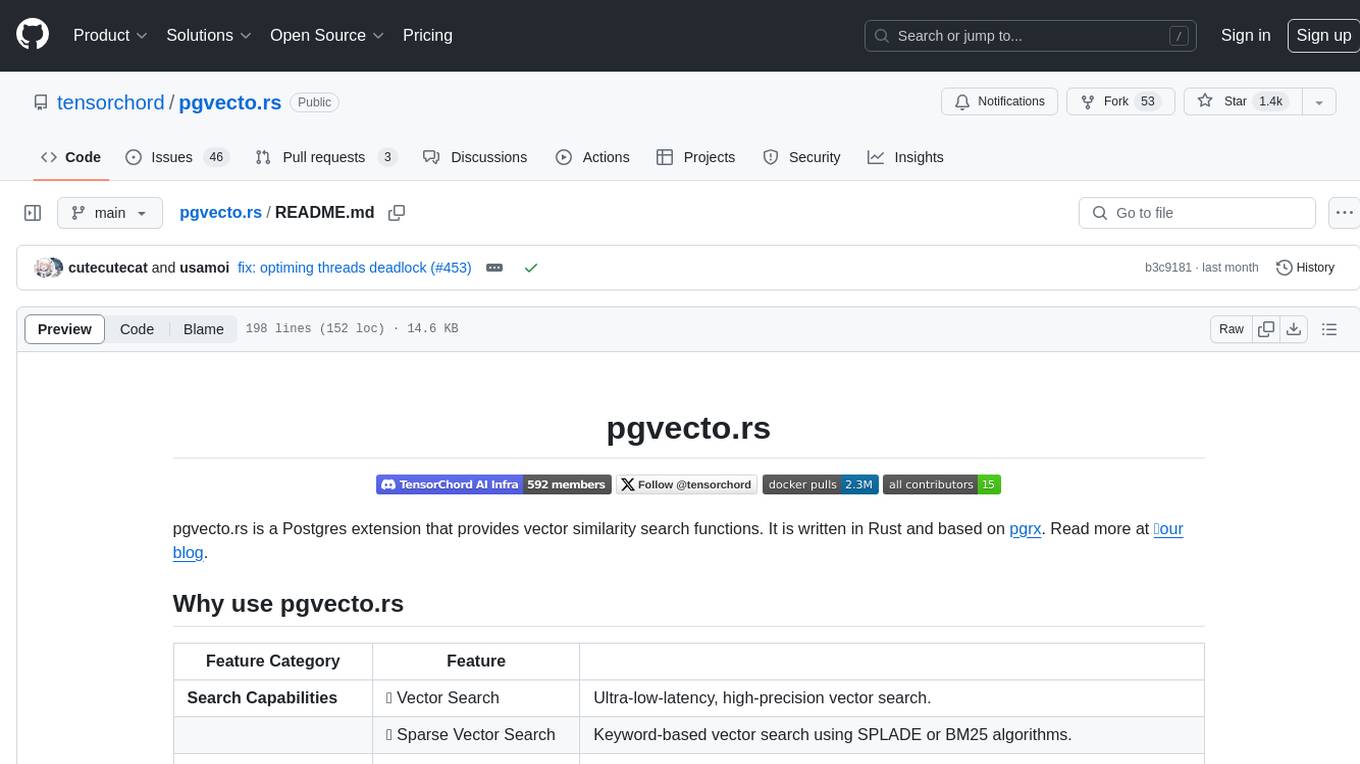
pgvecto.rs
pgvecto.rs is a Postgres extension written in Rust that provides vector similarity search functions. It offers ultra-low-latency, high-precision vector search capabilities, including sparse vector search and full-text search. With complete SQL support, async indexing, and easy data management, it simplifies data handling. The extension supports various data types like FP16/INT8, binary vectors, and Matryoshka embeddings. It ensures system performance with production-ready features, high availability, and resource efficiency. Security and permissions are managed through easy access control. The tool allows users to create tables with vector columns, insert vector data, and calculate distances between vectors using different operators. It also supports half-precision floating-point numbers for better performance and memory usage optimization.
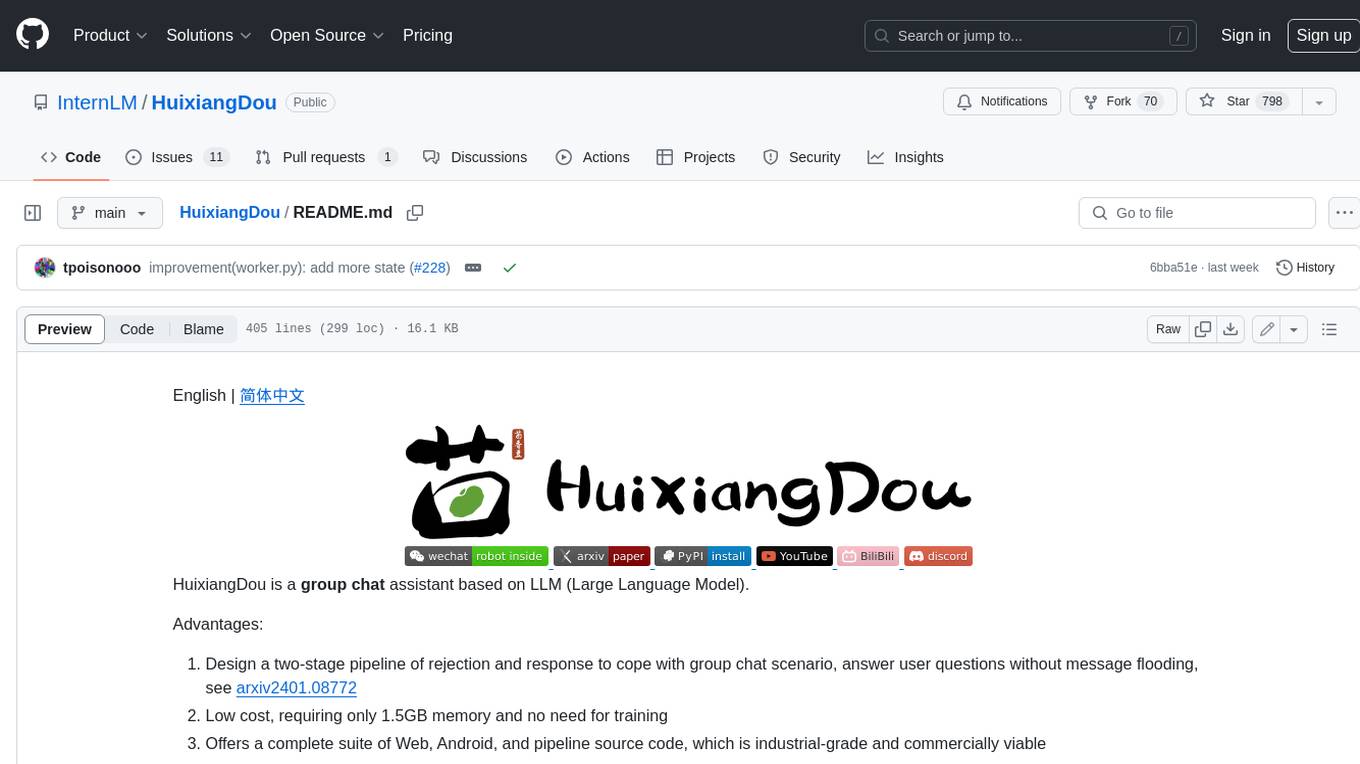
HuixiangDou
HuixiangDou is a **group chat** assistant based on LLM (Large Language Model). Advantages: 1. Design a two-stage pipeline of rejection and response to cope with group chat scenario, answer user questions without message flooding, see arxiv2401.08772 2. Low cost, requiring only 1.5GB memory and no need for training 3. Offers a complete suite of Web, Android, and pipeline source code, which is industrial-grade and commercially viable Check out the scenes in which HuixiangDou are running and join WeChat Group to try AI assistant inside. If this helps you, please give it a star ⭐
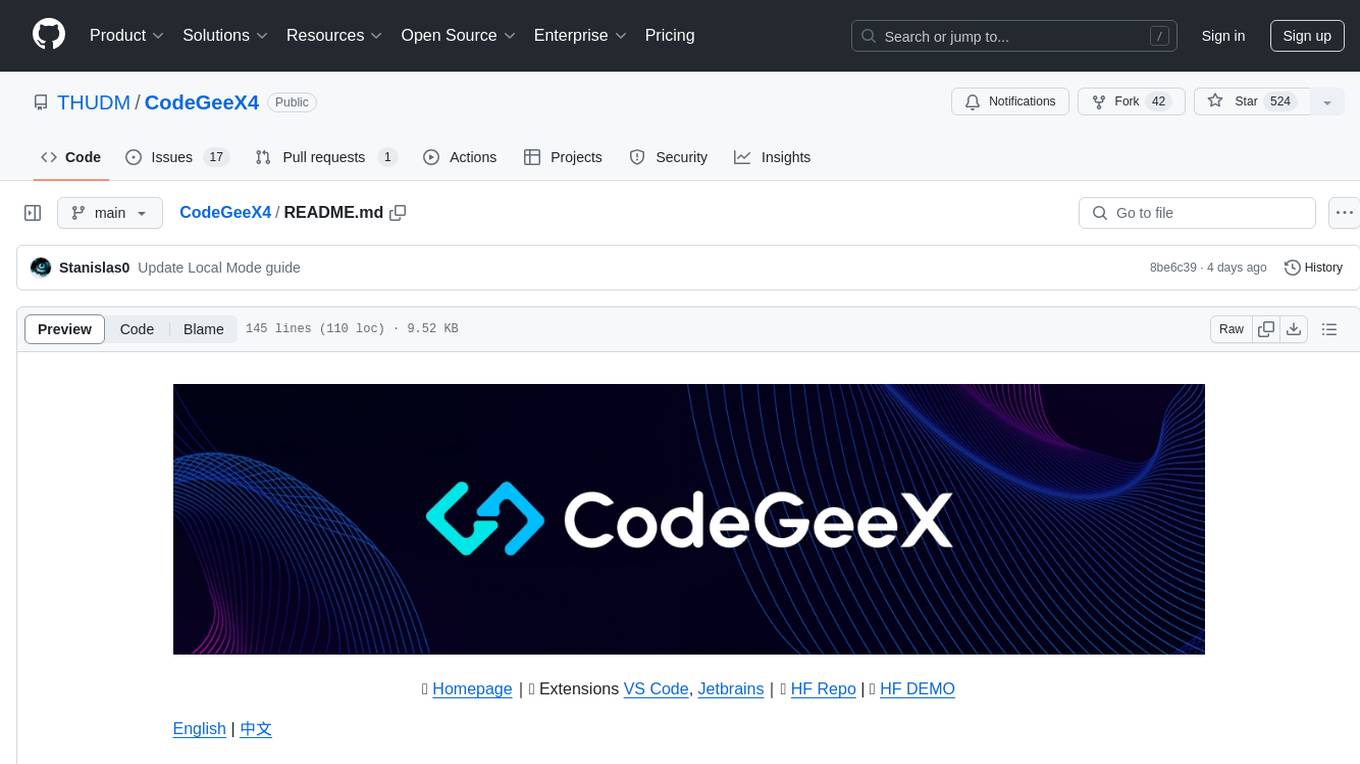
CodeGeeX4
CodeGeeX4-ALL-9B is an open-source multilingual code generation model based on GLM-4-9B, offering enhanced code generation capabilities. It supports functions like code completion, code interpreter, web search, function call, and repository-level code Q&A. The model has competitive performance on benchmarks like BigCodeBench and NaturalCodeBench, outperforming larger models in terms of speed and performance.

zo2
ZO2 (Zeroth-Order Offloading) is an innovative framework designed to enhance the fine-tuning of large language models (LLMs) using zeroth-order (ZO) optimization techniques and advanced offloading technologies. It is tailored for setups with limited GPU memory, enabling the fine-tuning of models with over 175 billion parameters on single GPUs with as little as 18GB of memory. ZO2 optimizes CPU offloading, incorporates dynamic scheduling, and has the capability to handle very large models efficiently without extra time costs or accuracy losses.
auto-news
Auto-News is an automatic news aggregator tool that utilizes Large Language Models (LLM) to pull information from various sources such as Tweets, RSS feeds, YouTube videos, web articles, Reddit, and journal notes. The tool aims to help users efficiently read and filter content based on personal interests, providing a unified reading experience and organizing information effectively. It features feed aggregation with summarization, transcript generation for videos and articles, noise reduction, task organization, and deep dive topic exploration. The tool supports multiple LLM backends, offers weekly top-k aggregations, and can be deployed on Linux/MacOS using docker-compose or Kubernetes.
rl
TorchRL is an open-source Reinforcement Learning (RL) library for PyTorch. It provides pytorch and **python-first** , low and high level abstractions for RL that are intended to be **efficient** , **modular** , **documented** and properly **tested**. The code is aimed at supporting research in RL. Most of it is written in python in a highly modular way, such that researchers can easily swap components, transform them or write new ones with little effort.

Qwen
Qwen is a series of large language models developed by Alibaba DAMO Academy. It outperforms the baseline models of similar model sizes on a series of benchmark datasets, e.g., MMLU, C-Eval, GSM8K, MATH, HumanEval, MBPP, BBH, etc., which evaluate the models’ capabilities on natural language understanding, mathematic problem solving, coding, etc. Qwen models outperform the baseline models of similar model sizes on a series of benchmark datasets, e.g., MMLU, C-Eval, GSM8K, MATH, HumanEval, MBPP, BBH, etc., which evaluate the models’ capabilities on natural language understanding, mathematic problem solving, coding, etc. Qwen-72B achieves better performance than LLaMA2-70B on all tasks and outperforms GPT-3.5 on 7 out of 10 tasks.

kernel-memory
Kernel Memory (KM) is a multi-modal AI Service specialized in the efficient indexing of datasets through custom continuous data hybrid pipelines, with support for Retrieval Augmented Generation (RAG), synthetic memory, prompt engineering, and custom semantic memory processing. KM is available as a Web Service, as a Docker container, a Plugin for ChatGPT/Copilot/Semantic Kernel, and as a .NET library for embedded applications. Utilizing advanced embeddings and LLMs, the system enables Natural Language querying for obtaining answers from the indexed data, complete with citations and links to the original sources. Designed for seamless integration as a Plugin with Semantic Kernel, Microsoft Copilot and ChatGPT, Kernel Memory enhances data-driven features in applications built for most popular AI platforms.

Eco2AI
Eco2AI is a python library for CO2 emission tracking that monitors energy consumption of CPU & GPU devices and estimates equivalent carbon emissions based on regional emission coefficients. Users can easily integrate Eco2AI into their Python scripts by adding a few lines of code. The library records emissions data and device information in a local file, providing detailed session logs with project names, experiment descriptions, start times, durations, power consumption, CO2 emissions, CPU and GPU names, operating systems, and countries.
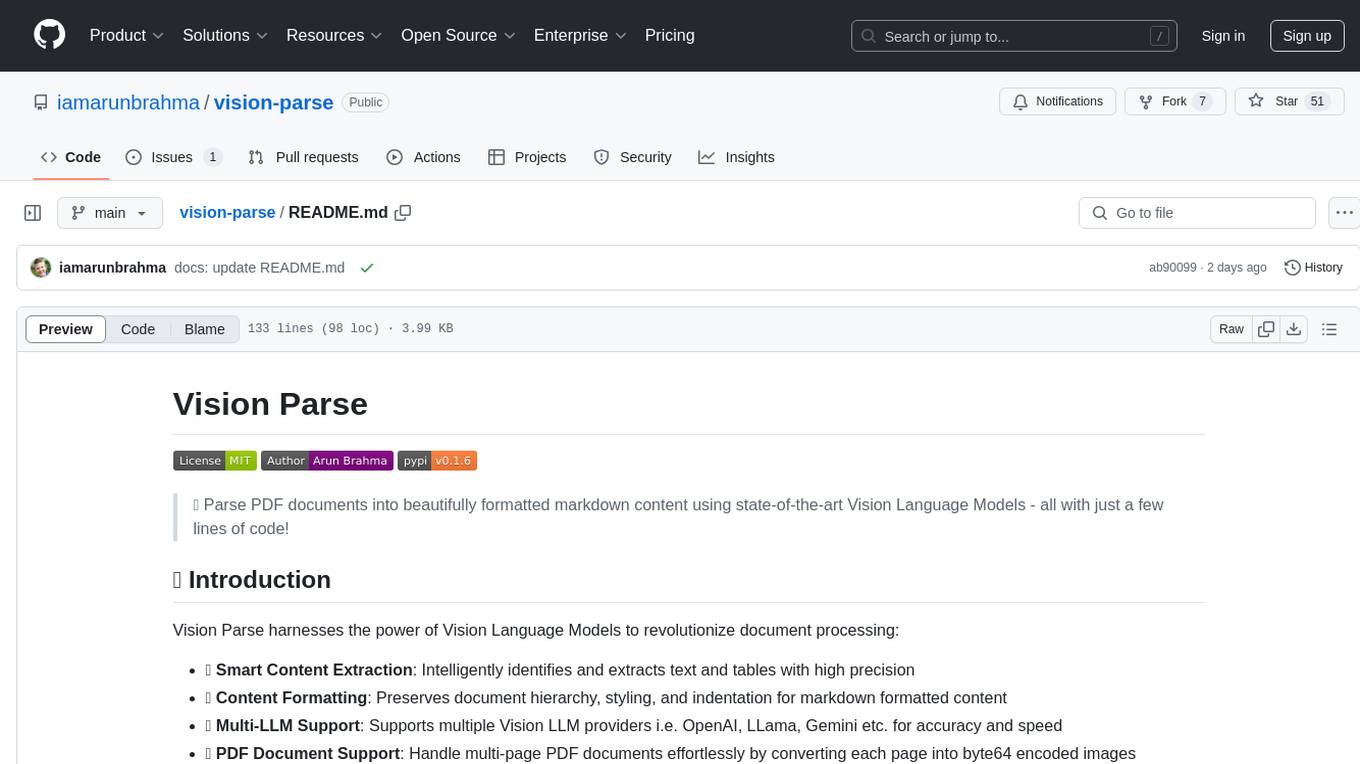
vision-parse
Vision Parse is a tool that leverages Vision Language Models to parse PDF documents into beautifully formatted markdown content. It offers smart content extraction, content formatting, multi-LLM support, PDF document support, and local model hosting using Ollama. Users can easily convert PDFs to markdown with high precision and preserve document hierarchy and styling. The tool supports multiple Vision LLM providers like OpenAI, LLama, and Gemini for accuracy and speed, making document processing efficient and effortless.
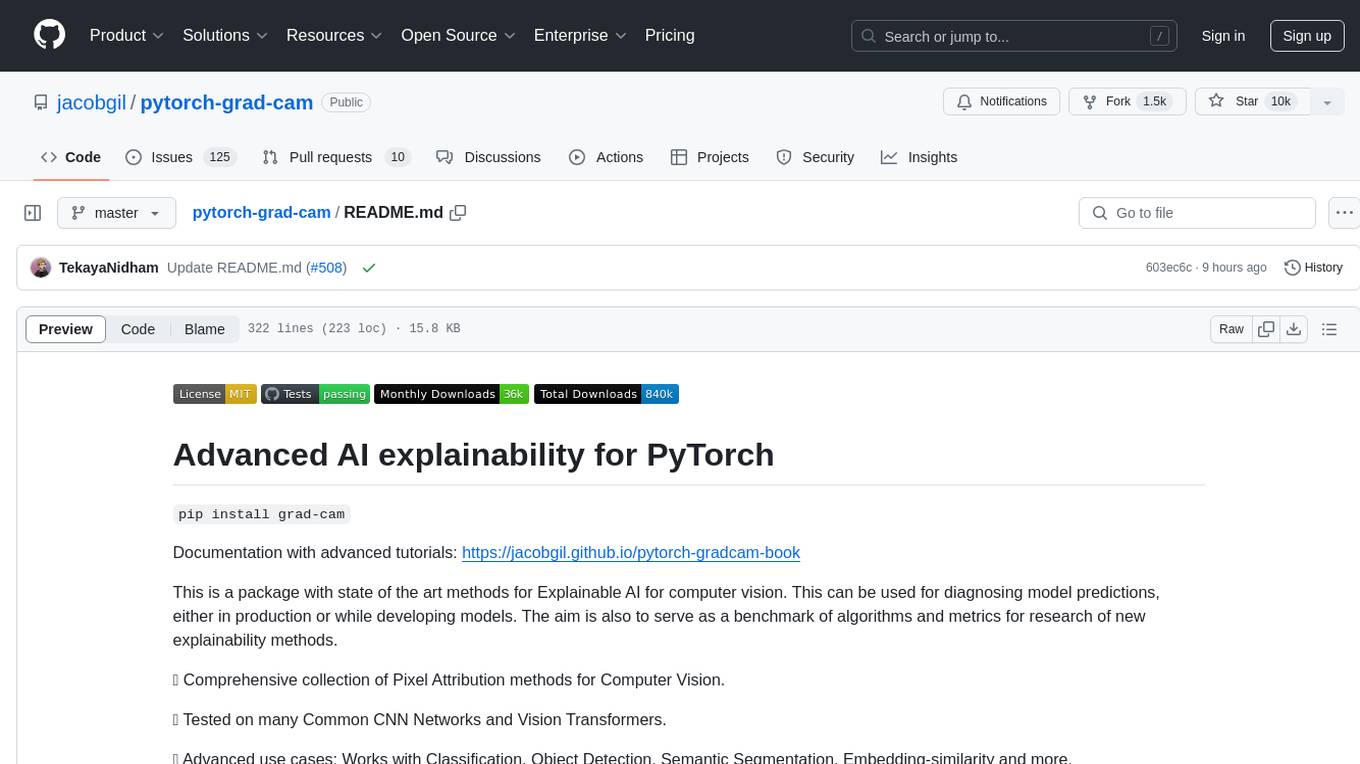
pytorch-grad-cam
This repository provides advanced AI explainability for PyTorch, offering state-of-the-art methods for Explainable AI in computer vision. It includes a comprehensive collection of Pixel Attribution methods for various tasks like Classification, Object Detection, Semantic Segmentation, and more. The package supports high performance with full batch image support and includes metrics for evaluating and tuning explanations. Users can visualize and interpret model predictions, making it suitable for both production and model development scenarios.
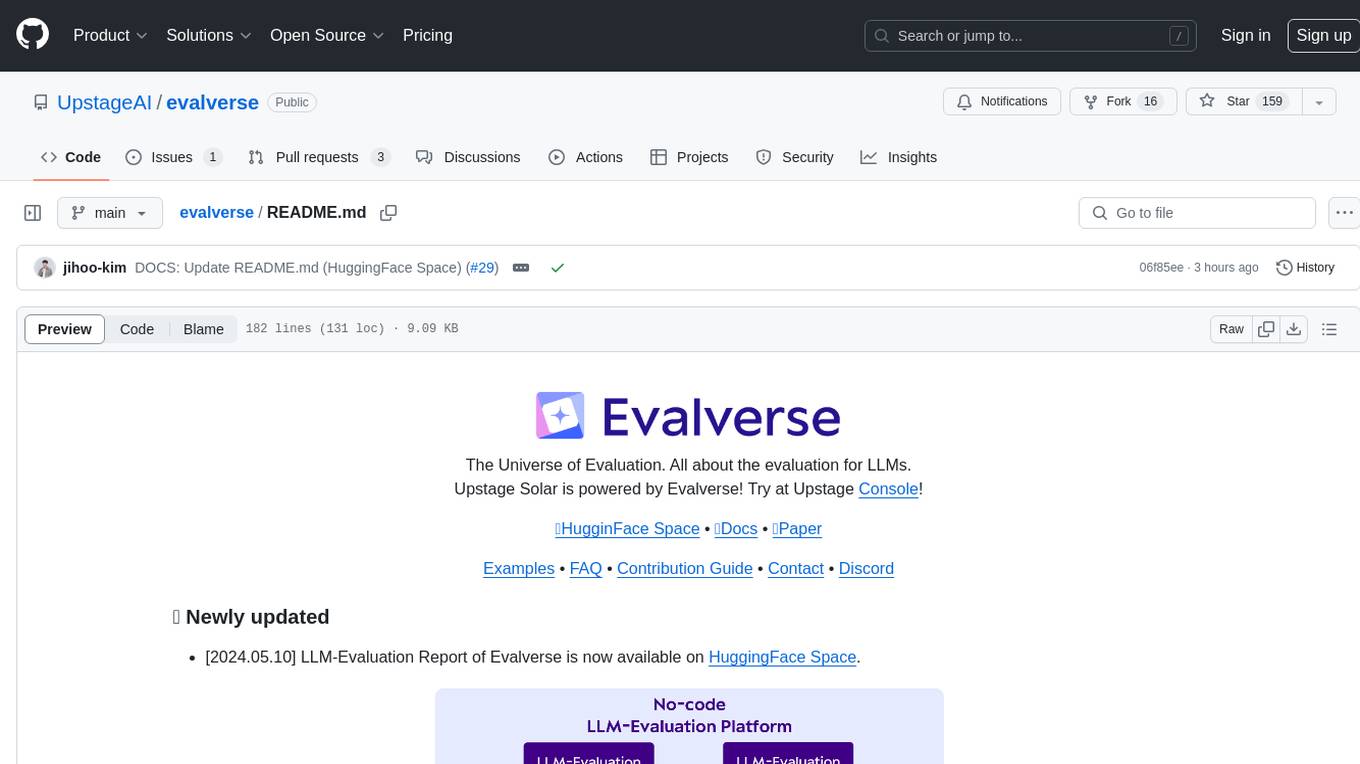
evalverse
Evalverse is an open-source project designed to support Large Language Model (LLM) evaluation needs. It provides a standardized and user-friendly solution for processing and managing LLM evaluations, catering to AI research engineers and scientists. Evalverse supports various evaluation methods, insightful reports, and no-code evaluation processes. Users can access unified evaluation with submodules, request evaluations without code via Slack bot, and obtain comprehensive reports with scores, rankings, and visuals. The tool allows for easy comparison of scores across different models and swift addition of new evaluation tools.
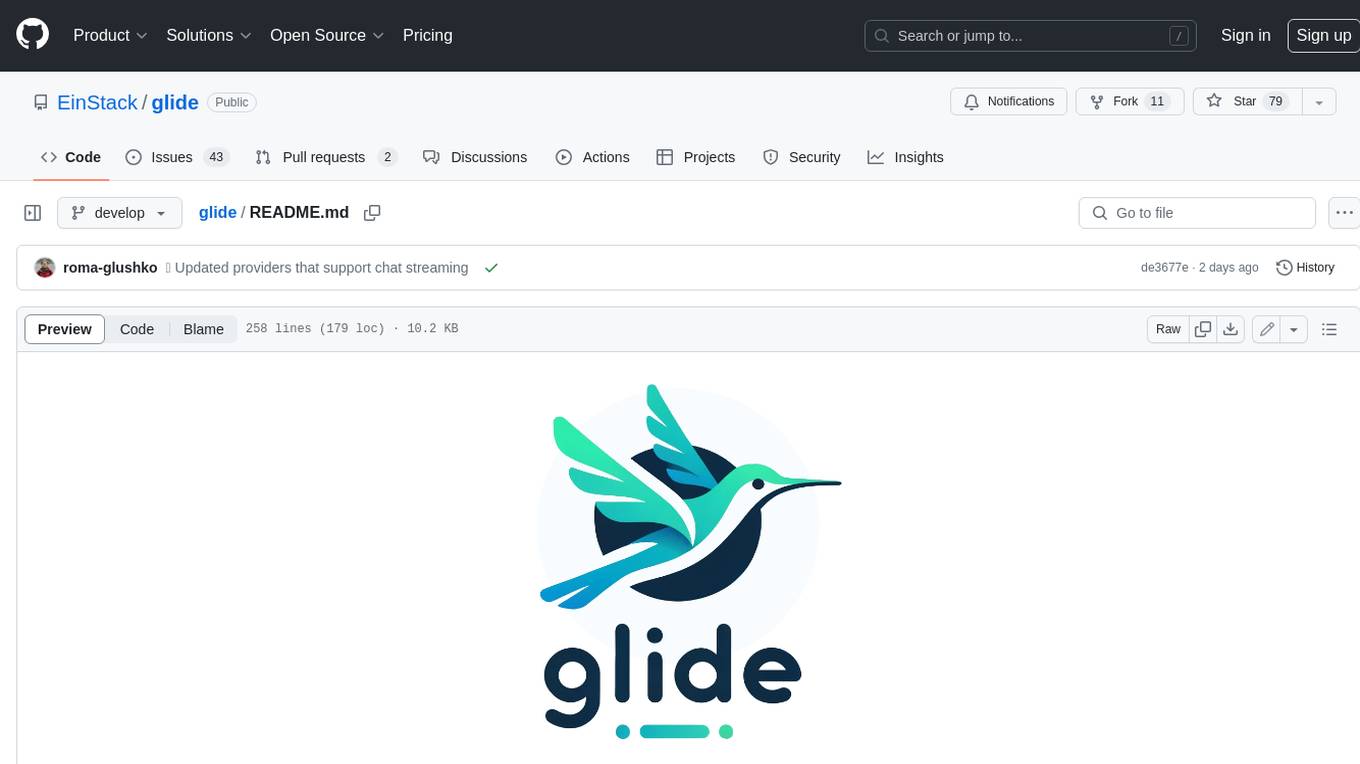
glide
Glide is a cloud-native LLM gateway that provides a unified REST API for accessing various large language models (LLMs) from different providers. It handles LLMOps tasks such as model failover, caching, key management, and more, making it easy to integrate LLMs into applications. Glide supports popular LLM providers like OpenAI, Anthropic, Azure OpenAI, AWS Bedrock (Titan), Cohere, Google Gemini, OctoML, and Ollama. It offers high availability, performance, and observability, and provides SDKs for Python and NodeJS to simplify integration.
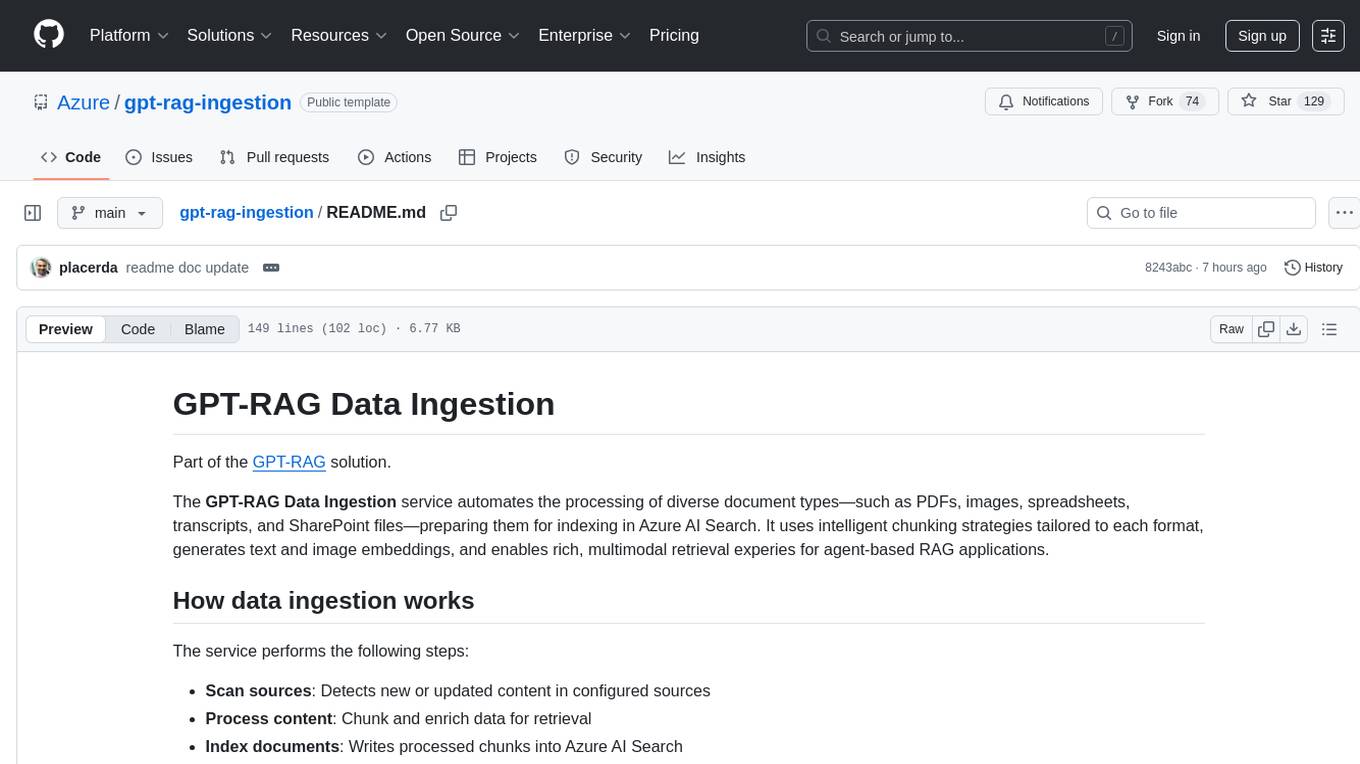
gpt-rag-ingestion
The GPT-RAG Data Ingestion service automates processing of diverse document types for indexing in Azure AI Search. It uses intelligent chunking strategies tailored to each format, generates text and image embeddings, and enables rich, multimodal retrieval experiences for agent-based RAG applications. Supported data sources include Blob Storage, NL2SQL Metadata, and SharePoint. The service selects chunkers based on file extension, such as DocAnalysisChunker for PDF files, OCR for image files, LangChainChunker for text-based files, TranscriptionChunker for video transcripts, and SpreadsheetChunker for spreadsheets. Deployment requires provisioning infrastructure and assigning specific roles to the user or service principal.
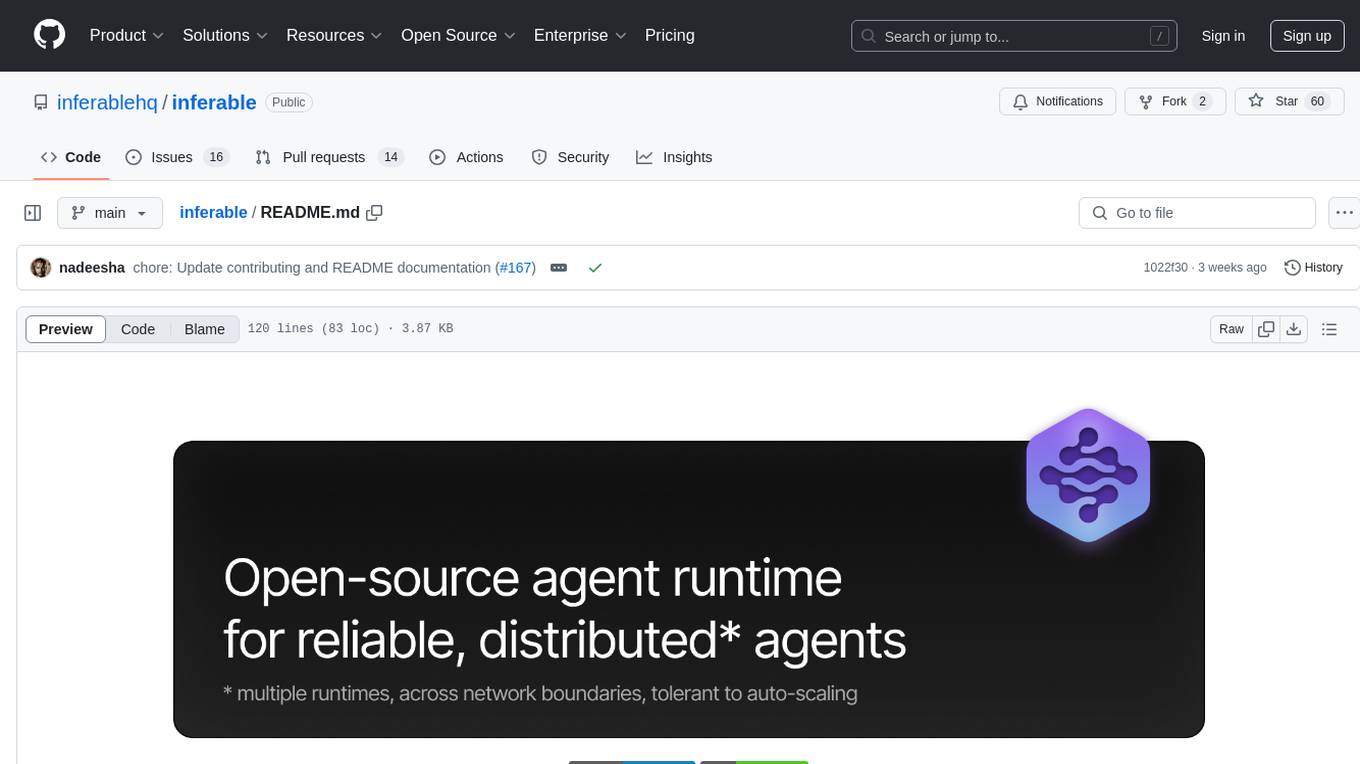
inferable
Inferable is an open source platform that helps users build reliable LLM-powered agentic automations at scale. It offers a managed agent runtime, durable tool calling, zero network configuration, multiple language support, and is fully open source under the MIT license. Users can define functions, register them with Inferable, and create runs that utilize these functions to automate tasks. The platform supports Node.js/TypeScript, Go, .NET, and React, and provides SDKs, core services, and bootstrap templates for various languages.
For similar tasks

lance
Lance is a modern columnar data format optimized for ML workflows and datasets. It offers high-performance random access, vector search, zero-copy automatic versioning, and ecosystem integrations with Apache Arrow, Pandas, Polars, and DuckDB. Lance is designed to address the challenges of the ML development cycle, providing a unified data format for collection, exploration, analytics, feature engineering, training, evaluation, deployment, and monitoring. It aims to reduce data silos and streamline the ML development process.
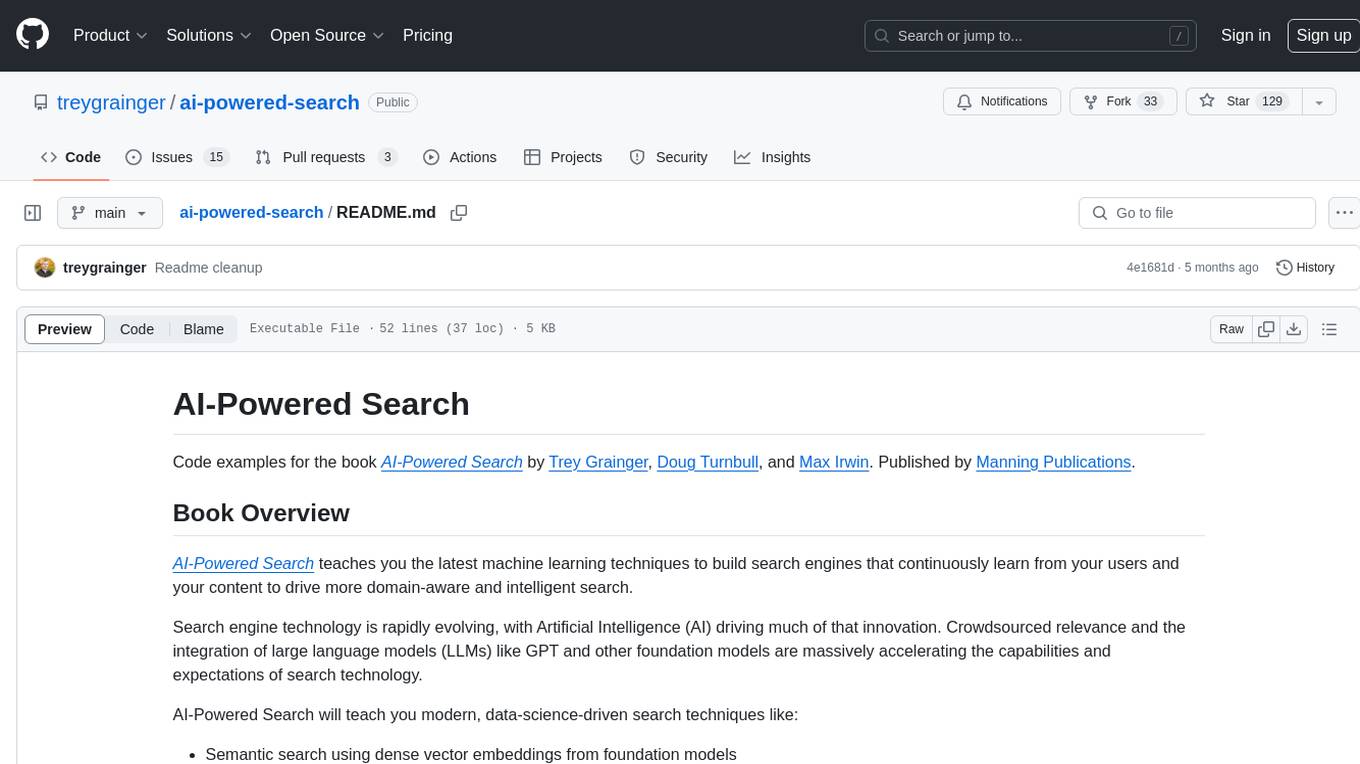
ai-powered-search
AI-Powered Search provides code examples for the book 'AI-Powered Search' by Trey Grainger, Doug Turnbull, and Max Irwin. The book teaches modern machine learning techniques for building search engines that continuously learn from users and content to deliver more intelligent and domain-aware search experiences. It covers semantic search, retrieval augmented generation, question answering, summarization, fine-tuning transformer-based models, personalized search, machine-learned ranking, click models, and more. The code examples are in Python, leveraging PySpark for data processing and Apache Solr as the default search engine. The repository is open source under the Apache License, Version 2.0.
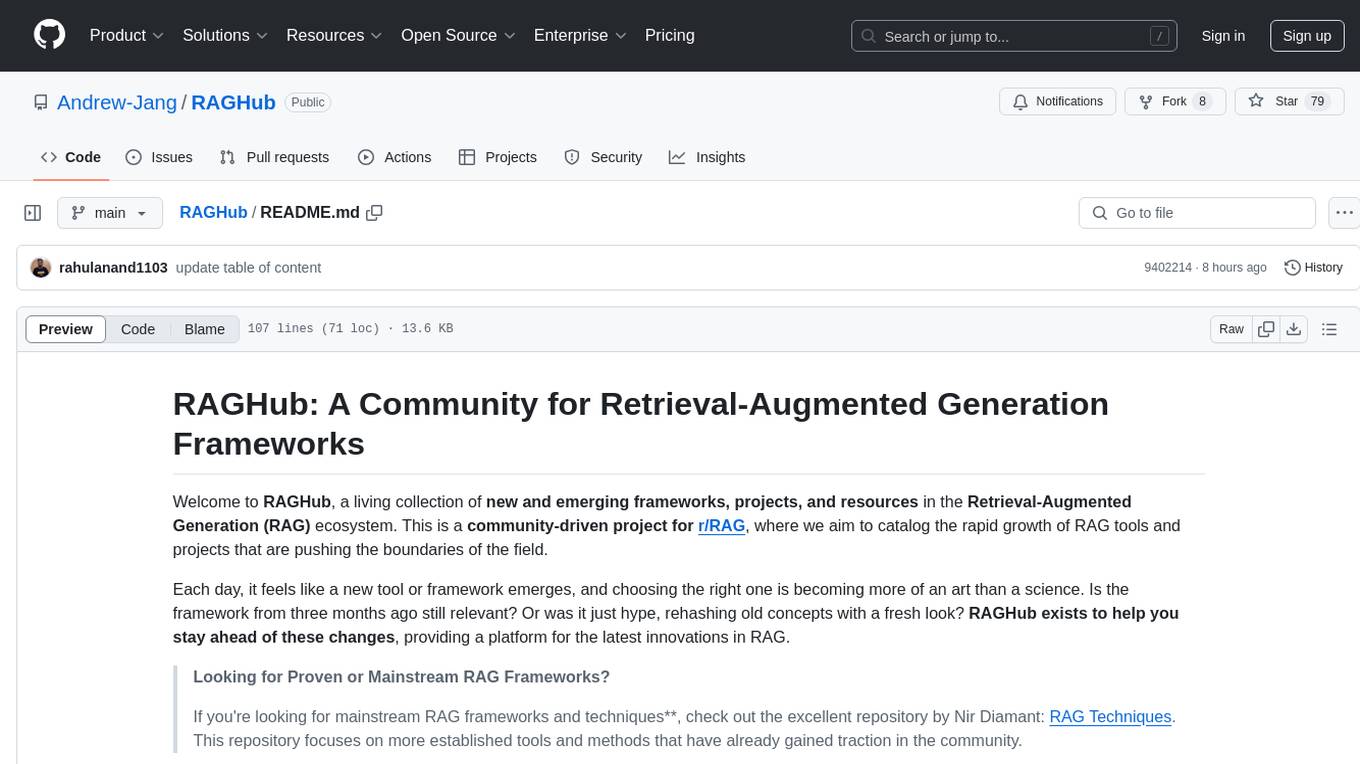
RAGHub
RAGHub is a community-driven project focused on cataloging new and emerging frameworks, projects, and resources in the Retrieval-Augmented Generation (RAG) ecosystem. It aims to help users stay ahead of changes in the field by providing a platform for the latest innovations in RAG. The repository includes information on RAG frameworks, evaluation frameworks, optimization frameworks, citation frameworks, engines, search reranker frameworks, projects, resources, and real-world use cases across industries and professions.
For similar jobs
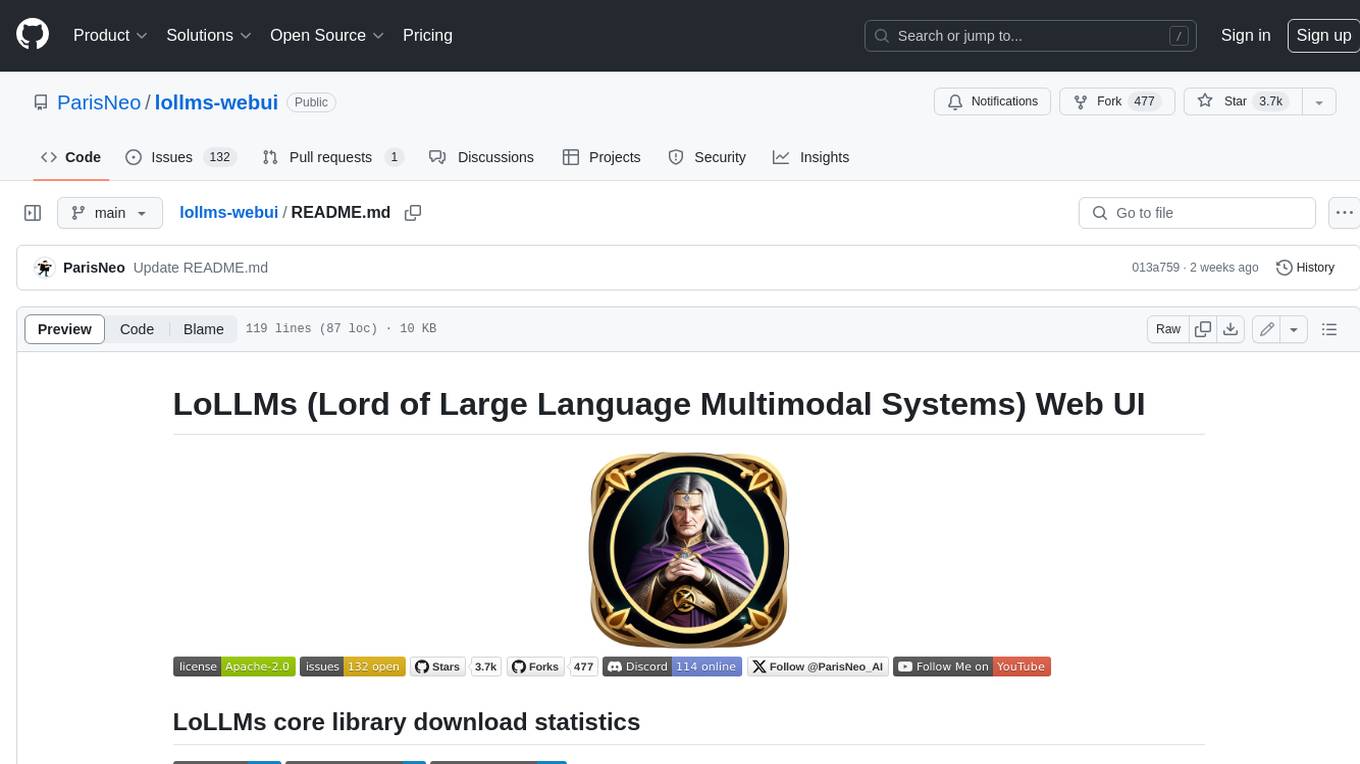
lollms-webui
LoLLMs WebUI (Lord of Large Language Multimodal Systems: One tool to rule them all) is a user-friendly interface to access and utilize various LLM (Large Language Models) and other AI models for a wide range of tasks. With over 500 AI expert conditionings across diverse domains and more than 2500 fine tuned models over multiple domains, LoLLMs WebUI provides an immediate resource for any problem, from car repair to coding assistance, legal matters, medical diagnosis, entertainment, and more. The easy-to-use UI with light and dark mode options, integration with GitHub repository, support for different personalities, and features like thumb up/down rating, copy, edit, and remove messages, local database storage, search, export, and delete multiple discussions, make LoLLMs WebUI a powerful and versatile tool.
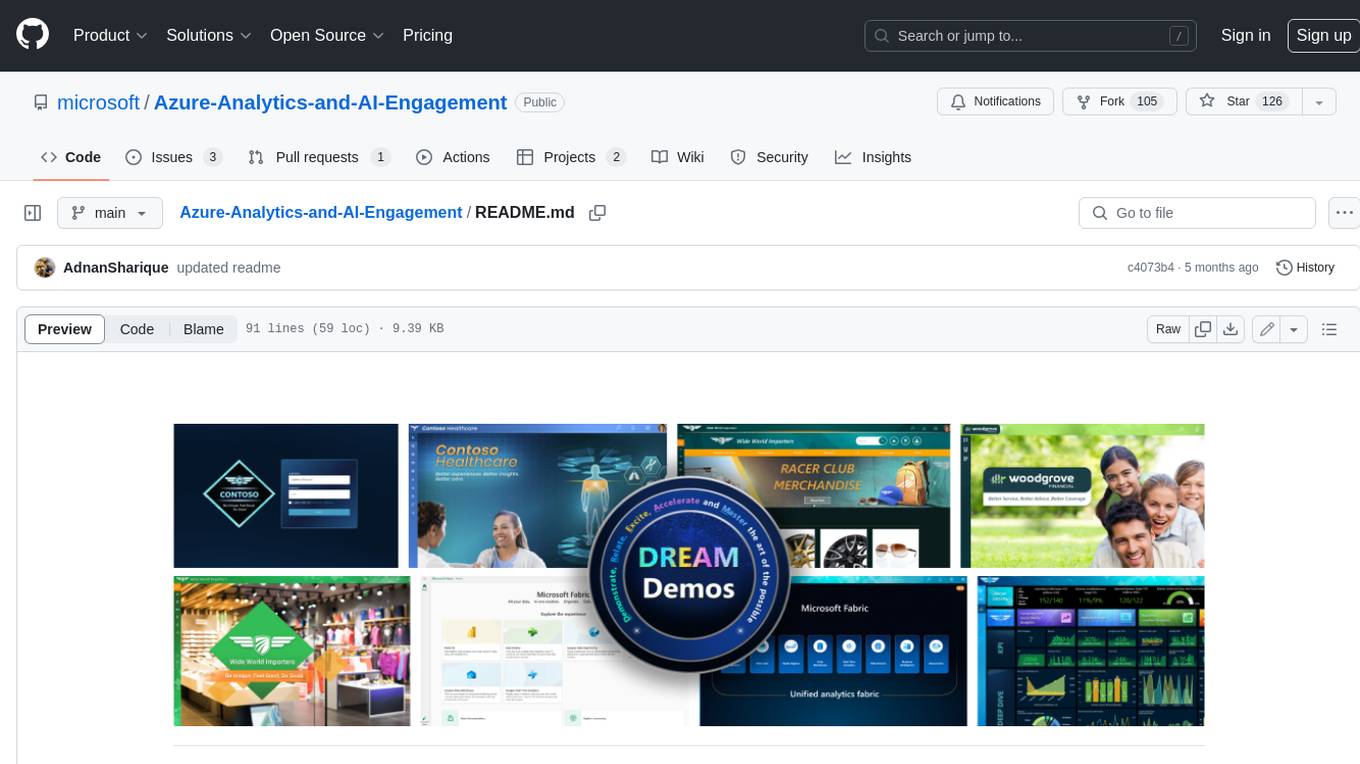
Azure-Analytics-and-AI-Engagement
The Azure-Analytics-and-AI-Engagement repository provides packaged Industry Scenario DREAM Demos with ARM templates (Containing a demo web application, Power BI reports, Synapse resources, AML Notebooks etc.) that can be deployed in a customer’s subscription using the CAPE tool within a matter of few hours. Partners can also deploy DREAM Demos in their own subscriptions using DPoC.
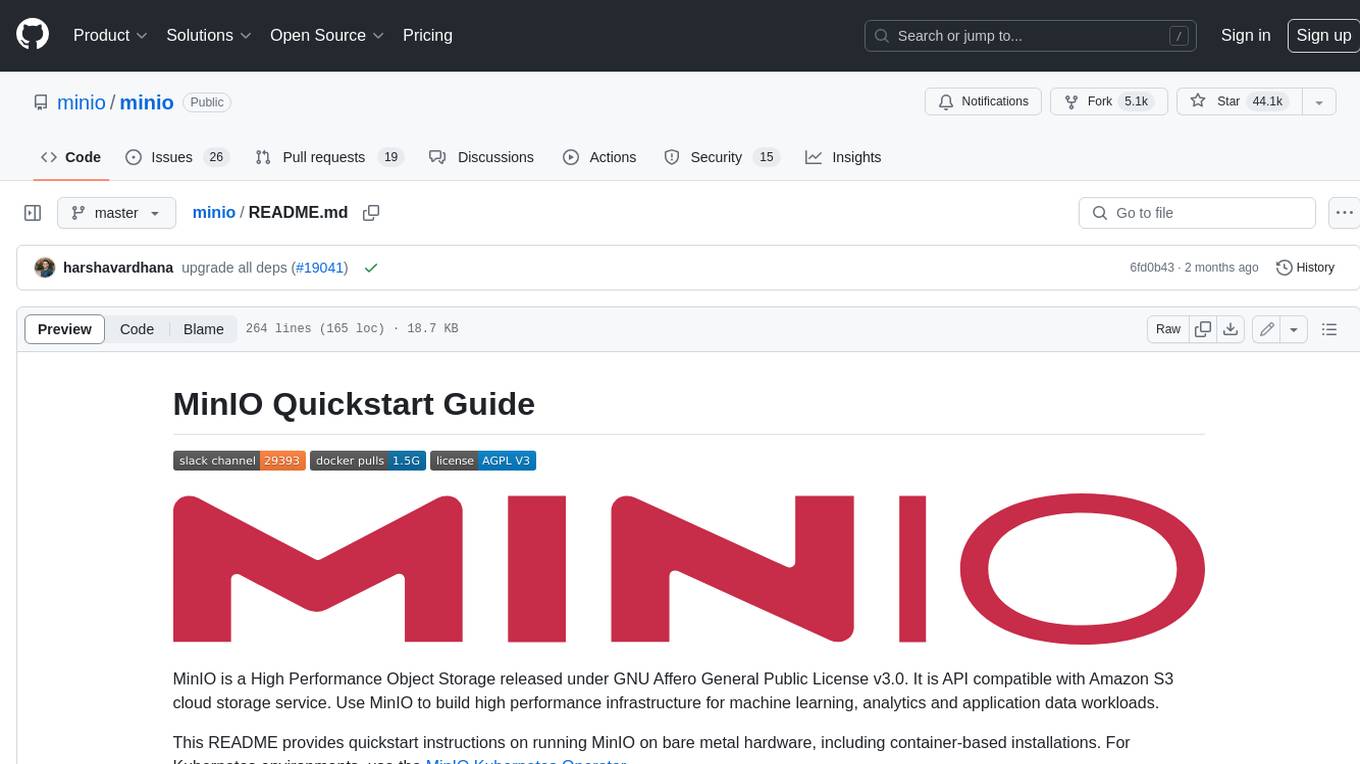
minio
MinIO is a High Performance Object Storage released under GNU Affero General Public License v3.0. It is API compatible with Amazon S3 cloud storage service. Use MinIO to build high performance infrastructure for machine learning, analytics and application data workloads.

mage-ai
Mage is an open-source data pipeline tool for transforming and integrating data. It offers an easy developer experience, engineering best practices built-in, and data as a first-class citizen. Mage makes it easy to build, preview, and launch data pipelines, and provides observability and scaling capabilities. It supports data integrations, streaming pipelines, and dbt integration.
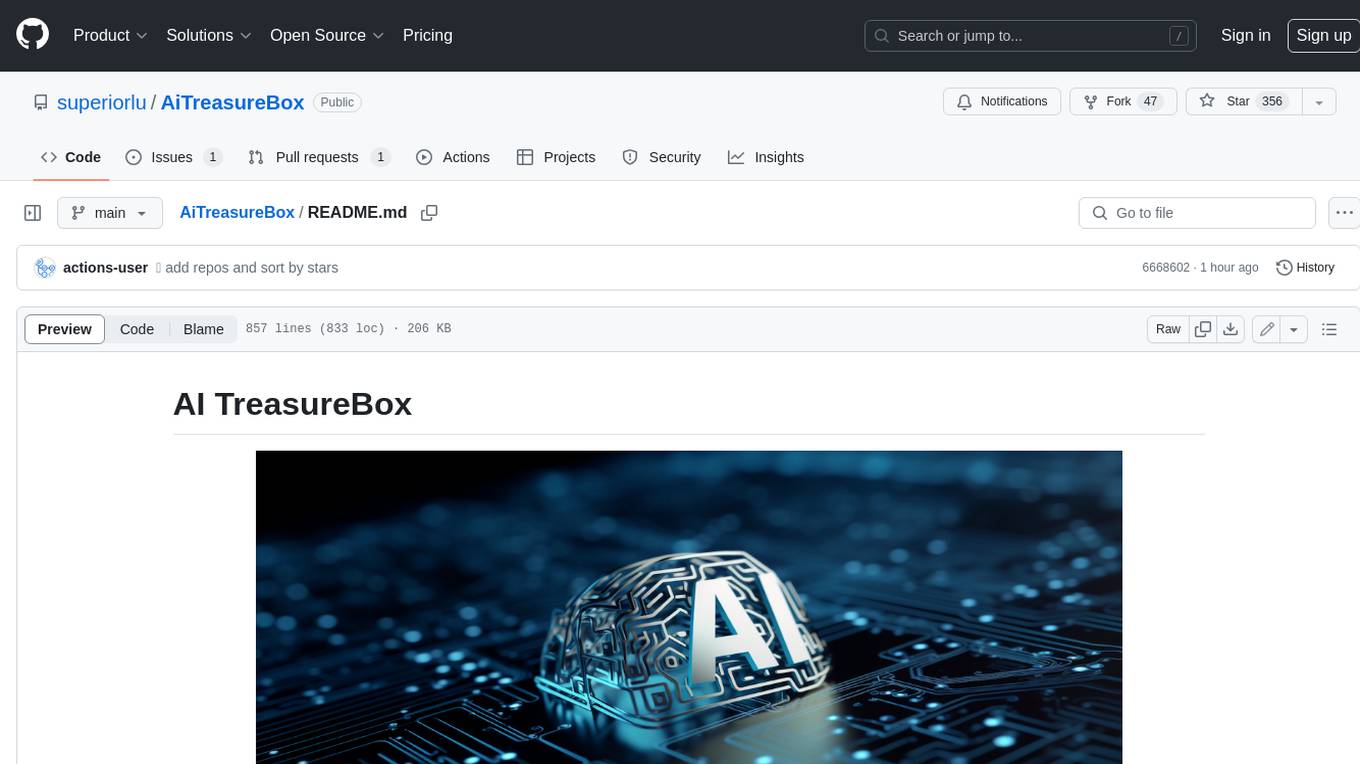
AiTreasureBox
AiTreasureBox is a versatile AI tool that provides a collection of pre-trained models and algorithms for various machine learning tasks. It simplifies the process of implementing AI solutions by offering ready-to-use components that can be easily integrated into projects. With AiTreasureBox, users can quickly prototype and deploy AI applications without the need for extensive knowledge in machine learning or deep learning. The tool covers a wide range of tasks such as image classification, text generation, sentiment analysis, object detection, and more. It is designed to be user-friendly and accessible to both beginners and experienced developers, making AI development more efficient and accessible to a wider audience.
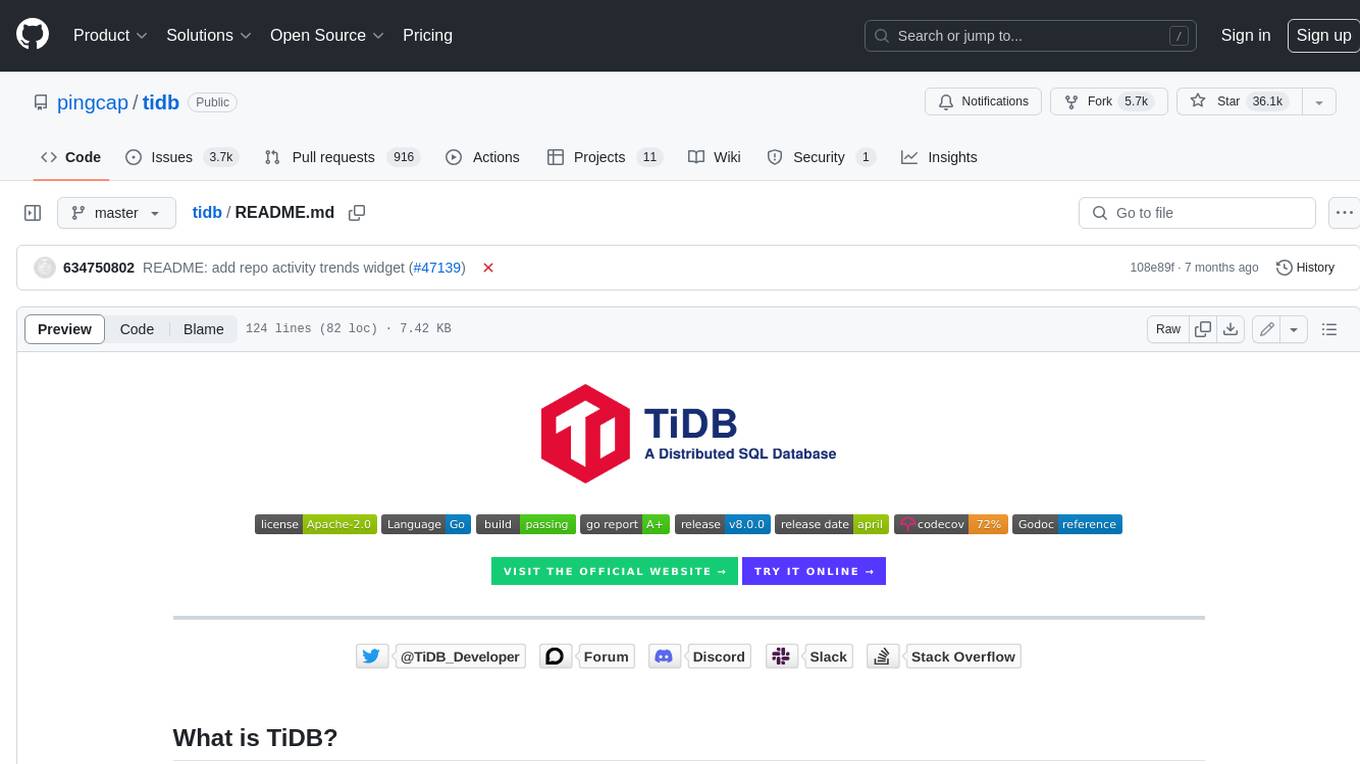
tidb
TiDB is an open-source distributed SQL database that supports Hybrid Transactional and Analytical Processing (HTAP) workloads. It is MySQL compatible and features horizontal scalability, strong consistency, and high availability.
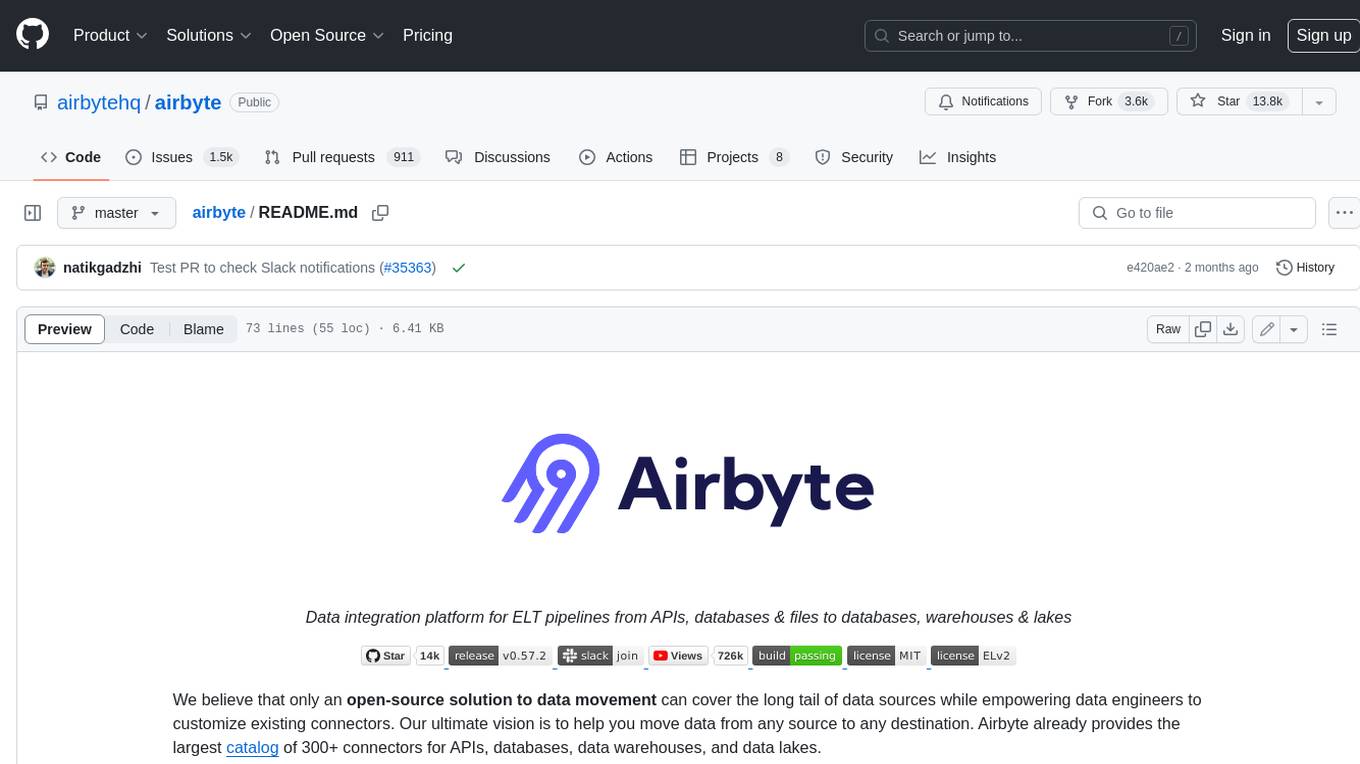
airbyte
Airbyte is an open-source data integration platform that makes it easy to move data from any source to any destination. With Airbyte, you can build and manage data pipelines without writing any code. Airbyte provides a library of pre-built connectors that make it easy to connect to popular data sources and destinations. You can also create your own connectors using Airbyte's no-code Connector Builder or low-code CDK. Airbyte is used by data engineers and analysts at companies of all sizes to build and manage their data pipelines.
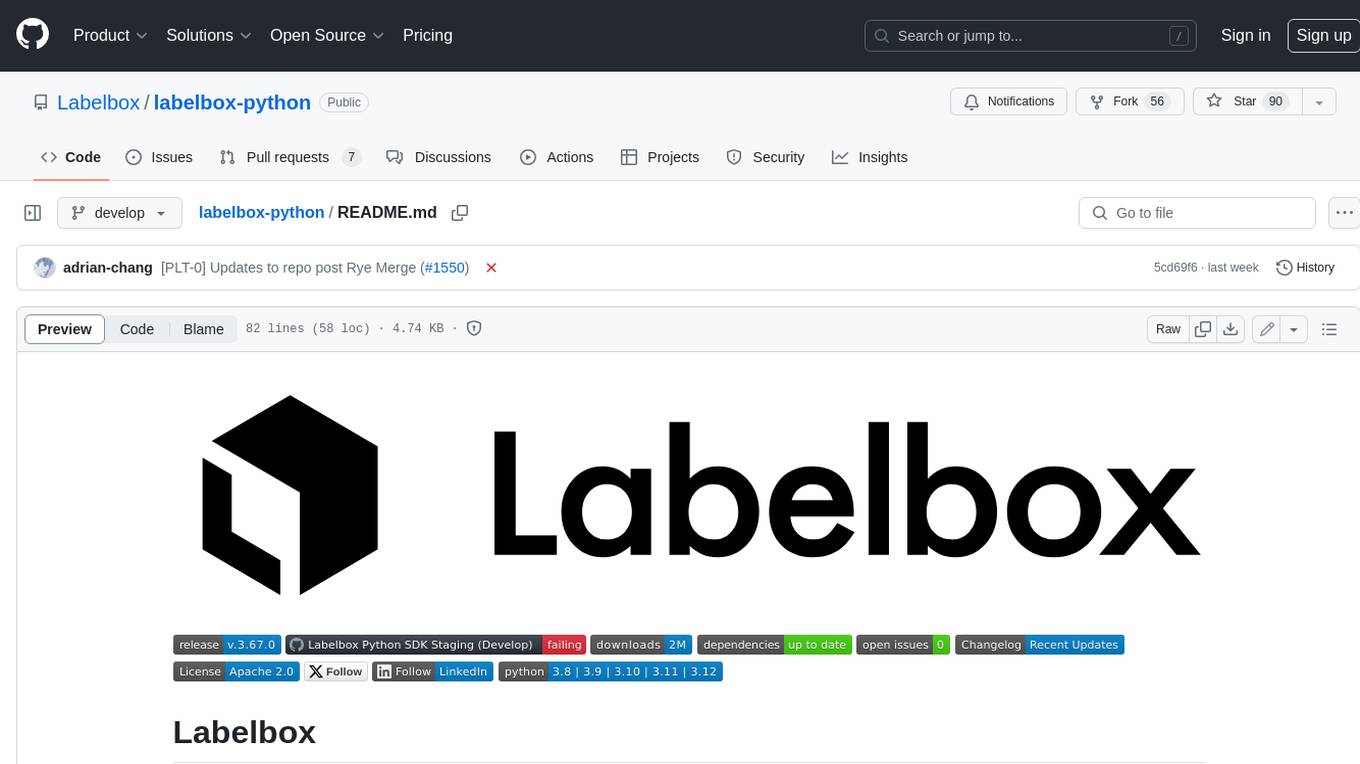
labelbox-python
Labelbox is a data-centric AI platform for enterprises to develop, optimize, and use AI to solve problems and power new products and services. Enterprises use Labelbox to curate data, generate high-quality human feedback data for computer vision and LLMs, evaluate model performance, and automate tasks by combining AI and human-centric workflows. The academic & research community uses Labelbox for cutting-edge AI research.






